

Chenin Blanc. This white grape, also known as Pineau de la Loire, is cultivated on the clay limestone and schist rich soils of Vouvray, an area along the right bank of the Loire river in Touraine, from which the 100% Chenin Blanc wine produced here takes its name. Vouvray lies within the Loire Valley and comprises 150 vineyards that are located in the villages of Chancay, Noizay, Reugny, Rochecorbon Tours, Saint Radegonde, Vernou sur Brenne and Vouvray. Vouvray wine is known for its distinctively crisp acidic character, its fresh green apple, citrus and floral elements and its minerality.
The Chenin Blanc grape is as important to Vouvray as the Sauvignon Blanc grape is to Sancerre (also in the Loire Valley). Chenin Blanc is the chief varietal cultivated in Vouvray, and everything from sparkling Vouvray Fines Bulles, (comprising 40% of Vouvray production), and still white Vouvray Sec, to mildly sweet Vouvray Demi Sec and Vouvray Moelleux,-a sweet wine that works equally well as an apertif and as a food pairing candidate- is produced in Vouvray. Chenin Blanc matures late and harvesting begins between the beginning of October and the middle of November depending on the temperature in any given year. Vouvray Moelleux is usually produced when seasonal temperatures are warmer because higher temperatures tend to result in grapes that have greater levels of residual sugar. The Chenin Blanc is intentionally left on the vine past the autumn harvest so that it might botrytise. Flavor and sugar alcohol is concentrated in the ultra ripe botrytised Chenin Blanc. Vouvray Moelleux is crafted from botrytised Chenin Blanc and the result is a complex and aromatic elixir marked by ripe orchard and honeyed baked citrus fruit and jammy notes. Vouvray Moelleux also ages remarkably well and evolves with the passage of time.
The floral aromatics and fruit forward nature of Vouvray makes it a global favorite. Over 60% of still white and 10% of sparkling Vouvrays produced in the region are sold outside of France to countries in Western Europe, the United States and Asia. The inherent acidity in Vouvray makes it an especially ideal complement to seafood dominant and spicy cuisine.


A selection of different types of Vouvray were paired with a four course menu at Racine Restaurant during a wine trade seminar in New York City with sommelier Jame Sligh of La Compagnie des Vins Surnaturels at the helm.

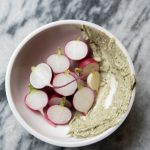
The natural acidity, bright citrus fruit and clean lemon zest tinged finish of a Vouvray Sparkling Brut, Domaine d Orfeuilles worked equally well as an apertif and as an accompaniment to a simple crudite of radishes and jasmine butter, as well as a creamy goat cheese gougere.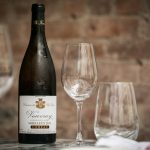

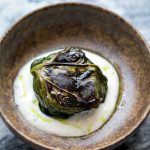
Two Vouvray sec, a Domaine Damien Pinon, Tuffo, 2017 with subtle floral aromas, lovely citrus, apple and pear notes, and a silky finish, and a Domaine Vigneau Chevreau, Silex, 2018 with aromas of white flowers and orchard fruit, and notes of ripe peaches, lemon and pears, were poured with a grilled kohlrabi. The subtly earthy flavors of the kohlrabi were tempered by the refreshing fruit driven character and soft acidity of these two wines.


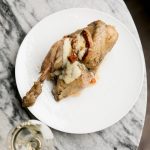
Two additional still white Vouvray including a Domaine des Aubuissieres, Cuvee de Silex, 2017 with comparably more pronounced acidity and young citrus fruit character, and a Domaine Champalou, 2017 that was marked by zesty lemon and lime notes, and considerable minerality were chosen to pair with a tender slow poached half chicken topped with seared foie gras and served with a preserved fruit sauce. The more pronounced acidity in these two wines rounded out the concentrated flavors of the foie gras and cut through its inherent fattiness while the mineral quality of the second wine gave this light white meat dish an added dimension of earthiness.
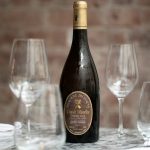

Two Vouvray Moelleux including a Domaine du Clos Naudin, 2015 with rich aromas of white flowers and eucalyptus, and notes of ripe citrus and orchard fruit, and fragrant herbs, and a Domaine du Viking, Cuvee’ Aurelie, 2005 with elegant floral and ripe apricot, peach and pear aromas, as well as preserved lemon, orange and honey, and baked orchard fruit notes were served with an apricot glazed apple tart. The two Vouvray Moelleux harmonized seamlessly with this flaky and buttery dessert.


Be First to Comment